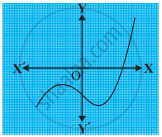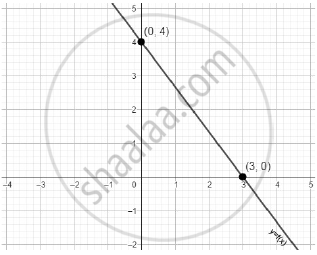Advertisements
Advertisements
Question
The graph of y = f(x) is shown in the figure for some polynomial f(x).

The number of zeroes of f(x) is ______.
Options
0
2
3
4
Solution
The graph of y = f(x) is shown in the figure for some polynomial f(x).

The number of zeroes of f(x) is 0.
Explanation:
y = f(x) is not intersect or touch the X-axis.
∴ Number of zeroes of f(x) = 0
APPEARS IN
RELATED QUESTIONS
The graphs of y = p(x) are given in following figure, for some polynomials p(x). Find the number of zeroes of p(x).

If one zero of the polynomial `x^2-4x+1 is (2+sqrt3)` , write the other zero.
If the sum of the zeros of the quadratic polynomial `kx^2-3x + 5` is 1 write the value of k..
If one of the zeroes of the quadratic polynomial (k – 1) x2 + kx + 1 is - 3, then the value of k is ______.
If one of the zeroes of the cubic polynomial x3 + ax2 + bx + c is -1, then the product of the
other two zeroes is ______.
If x3 + 11 is divided by x2 – 3, then the possible degree of remainder is ______.
If f(x) = 5x - 10 is divided by x – `sqrt2`, then the remainder will be ______.
If the graph of a polynomial intersects the x-axis at only one point, it cannot be a quadratic polynomial.
The given linear polynomial y = f(x) has

If α and β are the zeroes of the polynomial x2 + x − 2, then find the value of `alpha/beta+beta/alpha`
